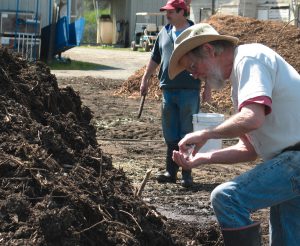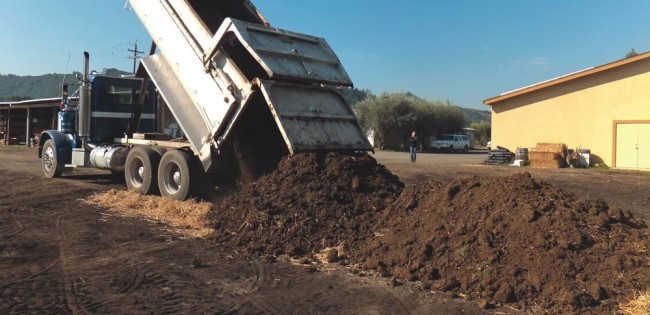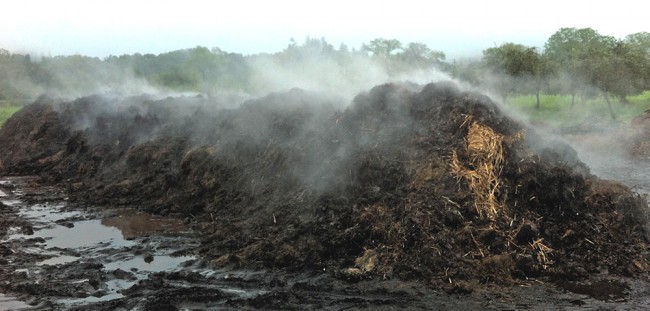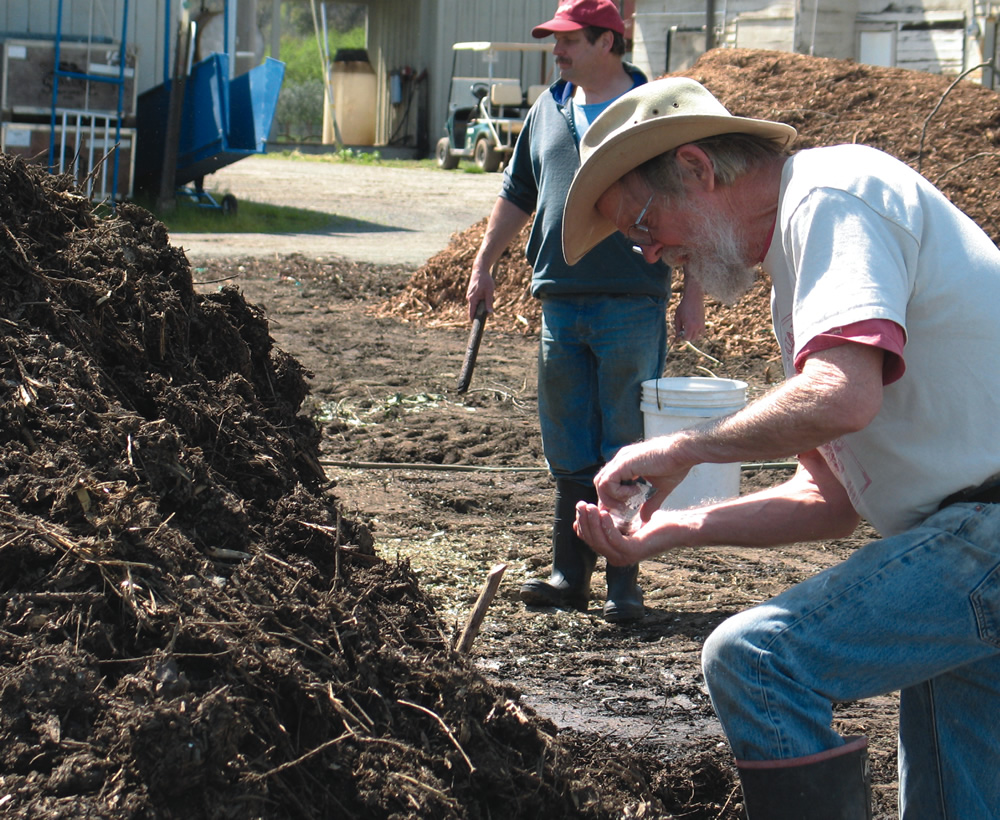Preston Vineyards produces about 300 cubic yards/year of compost, which is applied in the fall after the October harvest.
Dan Emerson
BioCycle June 2013, Vol. 54, No. 6, p. 33

Lou Preston of Preston Vineyards (above) in Sonoma County began making compost four years ago, pursuing an interest in biodynamic farming.
After several years of unsuccessful organic farming experimentation, the Prestons made “a serious commitment” to organic farming in 2000. They connected with an organic farming expert who “said ‘The first thing to do is buy as much compost as you can afford and apply it to the whole property,’” Lou Preston recalls. The vineyard began buying and applying about 1.5 to 2 tons of compost per acre, per year. In the process, Preston estimates they spent about $30,000 on organic compost purchased from a supplier in Ukiah County.
Over time, the vineyard diversified their production, planting olive, apple and peach trees, and also producing a wide variety of vegetables to sell at local farmers’ markets.
The Prestons began making their own compost about four years ago, pursuing an interest in biodynamic farming. “One of the principles of biodynamic farming is ‘Recycle your own nutrients; don’t import them from outside your farm,’” he explains. Preston Vineyards follows the U.S. Department of Agriculture’s National Organic Program’s requirements for making compost, maintaining a temperature of between 131°F and 170°F for 15 days using a windrow composting system, during which time the materials must be turned a minimum of five times.

Composting at Preston Vineyards takes place in a roughly 60-by-200 foot area behind some farm buildings. Feedstocks include wood chips, mown grass, grape and olive pomace and organic dairy manure.
Compost Production
Composting takes place in a roughly 60-by-200-foot area behind some farm buildings. A windrow, roughly 60 feet long and 10 feet high, includes wood chips from tree prunings, mown grass, grape and olive pomace, and cow manure from a nearby organic dairy. “Once we assemble the pile and get the moisture content right, it starts fermenting right away,” notes Preston. Piles are turned three times a week using a front-end loader to maintain a temperature of about 170° to 180°F for three to four weeks.

The windrow is turned 3 times a week, and maintained at temperatures in the range of 170° to 180°F for 3 to 4 weeks. Once the pile cools down, specific quantities of biodynamic herbs such as yarrow, chamomile and stinging nettle are added to “energize the pile,” notes Preston.
To apply the compost in the fields, Preston uses a pull-trailer type spreader with a 7- to 8-cy capacity made by S&A Manufacturing in Livingston, California. Compost is applied in the fall after the October harvest; fields are then disked and Preston plants winter cover crops including beans, peas, vetch, barley and oats. About 2- to 3-tons/acre are applied to a depth of about two inches in the gardens and orchards, and only about one-eighth of an inch deep in the vineyards.
The compost has had the desired effect in improving growing conditions, resulting in increased yields and better quality grapes, other fruits and vegetables, according to Preston. “There are two ways to assess the results. You can look at the plants and see they are healthier and darker — an indication of more available nitrogen. And, our winemaker analyzes the grape juice and has seen better nitrogen content, and we get strong fermentation which is completed on-time.”
Another benefit is an ecosystem with “a better balance of beneficial insects vs. pests,” he adds. Using ladybugs, spiders, lacewings and other types of bugs that prey on pests eliminates the need for pesticides. Compost has also helped Preston grow abundant crops of a wide variety of vegetables for farmers’ markets.
Dan Emerson is a Contributing Editor to BioCycle.










